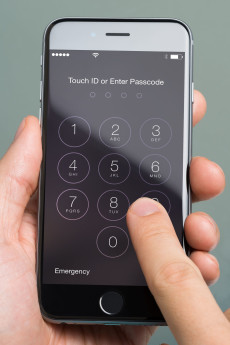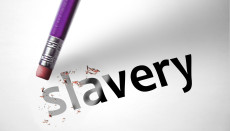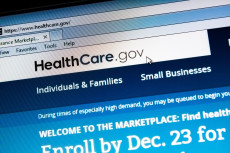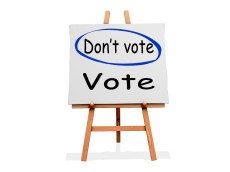John R. Graham • Thursday, March 24, 2016 •
 Most observers agree that it is very, very difficult for patients to choose health services wisely based on prices, because prices in U.S. health care are generally not transparent. The primary reason for this problem is that health providers haven’t relied on patients to pay their bills directly in many decades.
Most observers agree that it is very, very difficult for patients to choose health services wisely based on prices, because prices in U.S. health care are generally not transparent. The primary reason for this problem is that health providers haven’t relied on patients to pay their bills directly in many decades.
Instead, their business models rely on submitting claims to health insurers. Of course, there are convenient clinics and a few doctors and ambulatory clinics which post prices up front. However, the patient who enters the hospital – where most health costs are incurred – enters a maze of opaque and incomprehensible prices.
Some people believe price transparency can be commanded by government: Enter the “all-payer claims database,” which an increasing number of states are embracing. Every payer in the state reports its claims to this government-run database, and the government can then publicly disclose what actual health prices are.
The momentum for all-payer claims databases just hit a road-block at the U.S. Supreme Court, in the case Gobeille v. Liberty Mutual. This concerned a new Vermont law that compels payers to report their claims to the state’s all-payer claims database. The Supreme Court struck down the mandate, based on the doctrine of ERISA pre-emption.
Abigail R. Hall • Wednesday, March 23, 2016 •
 In the wake of the terror attack in San Bernardino late last year, the FBI and other government agents set out to uncover as much information about the attackers as possible. After searching the suspects’ home, speaking with the families of the perpetrators, and looking for other clues, authorities had uncovered a great deal of information about the two suspects.
In the wake of the terror attack in San Bernardino late last year, the FBI and other government agents set out to uncover as much information about the attackers as possible. After searching the suspects’ home, speaking with the families of the perpetrators, and looking for other clues, authorities had uncovered a great deal of information about the two suspects.
Despite their findings, however, gathering all the desired data proved exceptionally difficult. In February 2016, the FBI announced that it was unable to unlock the iPhone used by one of the shooters. The phone only allowed so many attempts at the passcode before it prevented any additional attempts. The phone’s operating software provided additional security in the form of encryption.
As a result, the FBI requested that Apple Inc. create a “backdoor” to their own operating system, one that would allow the FBI and other law enforcement to undermine the security features of Apple’s system. Apple denied this request, prompting the FBI to seek a court order.
Apple has opposed the FBI’s demands to create the program that would allow law enforcement to access information on their software. The legal battle is ongoing. On February 16, Apple CEO Tim Cook released an online statement to Apple customers, explaining why the company was refusing to comply with the order.
The United States government has demanded that Apple take an unprecedented step which threatens the security of our customers. We oppose this order, which has implications far beyond the legal case at hand. This moment calls for public discussion, and we want our customers and people around the country to understand what is at stake.
John R. Graham • Wednesday, March 23, 2016 •
 National Public Radio, the Robert Wood Johnson Foundation, and Harvard University’s T. H. Chan School of Public Health have released findings of a February survey titled “Patients’ Perspectives on Health Care in the United States.”
National Public Radio, the Robert Wood Johnson Foundation, and Harvard University’s T. H. Chan School of Public Health have released findings of a February survey titled “Patients’ Perspectives on Health Care in the United States.”
As with many such surveys, it does not send a very coherent signal about whether the people are largely satisfied or dissatisfied. Nevertheless, it has a lot of interesting insights. Most importantly:
Even though most (55%) Americans reflect positively on their state’s health care system, saying it is excellent or good, few give their state top marks. Just one in six (17%) say the health care system in their state is excellent, while more than two in five (42%) adults in the U.S. say it is fair or poor.
Americans are much more negative about the nation’s health care system than they are about the health care system in the state where they live. Only 38 percent of adults in the U.S. had positive things to say about the country’s health care system, and fewer than one in ten (9%) gave it top marks. In contrast, more than three in five (61%) U.S. adults say the nation’s health care system is fair or poor.
John R. Graham • Tuesday, March 22, 2016 •
 Healthcare business reporter Holly Fletcher of The Tennessean has written a very informative feature on the hospital revenue cycle, including a seven-deck slideshow that translates the process into layman’s terms. (The Tennessean is the best daily newspaper for understanding hospitals, because Nashville is home to for-profit hospital chains which control 60 percent of the beds in that industry, so the journalists know what they are talking about.)
Healthcare business reporter Holly Fletcher of The Tennessean has written a very informative feature on the hospital revenue cycle, including a seven-deck slideshow that translates the process into layman’s terms. (The Tennessean is the best daily newspaper for understanding hospitals, because Nashville is home to for-profit hospital chains which control 60 percent of the beds in that industry, so the journalists know what they are talking about.)
Ms. Fletcher describes an insane system of billing which has been focused on getting dollars out of the byzantine bureaucracies we call health insurers. The main economic reason insurance should be for rare, unforeseen, catastrophic events is that claims processing is expensive. It is not just shuffling paper around, but also managing fraud, waste and abuse. This adds to what is called the “load” of insurance.
When it comes to getting money from patients directly, hospitals are hopeless, with two-thirds of their accounts receivable remaining unpaid:
Billing practices are not designed to collect small, incremental payments from hundreds or thousands of patients. They are designed to bill a handful of large entities — insurance companies — not individuals who walk in the door.
Jonathan Bean • Monday, March 21, 2016 •

Advocates of reparations for the descendants of African American slaves recently challenged socialist Bernie Sanders to embrace their cause, which he refused to do. A leading advocate of reparations, Atlantic contributor Ta-Nehisi Coates, criticizes Sanders for placing class-based politics before race. Lost in the unending debate over reparations is a key point: group reparations ignore the classical-liberal values that abolished slavery in the first place and inspired generations of civil rights activists to fight for racial justice. Among those values: individual rights, impartial rule of law, and colorblindness. As we approach International Slavery Remembrance Day (March 25), it is important to remember the classical-liberal values that led America to abolish the practice. Placed in historical context, we ought to remember the evils of slavery, but also appreciate the classical-liberal values that destroyed it.
A good place to begin is with Ta-Nehisi Coates’ widely-discussed 2014 Atlantic article, “The Case for Reparations.” Coates trots out the usual arguments: most African Americans descend from slaves who deserved restitution for the labor and wages stolen from them. Coates wants the federal government to pay reparations to redress what was lost by slaves (and, Coates argues, their descendants).
John R. Graham • Monday, March 21, 2016 •
 The Obama administration recently announced that 12.7 million people selected or were automatically enrolled in an Obamacare exchange plan at the end of the third open season – February 1. Except for special cases, anyone who missed that deadline cannot enroll in an Obamacare plan for 2016.
The Obama administration recently announced that 12.7 million people selected or were automatically enrolled in an Obamacare exchange plan at the end of the third open season – February 1. Except for special cases, anyone who missed that deadline cannot enroll in an Obamacare plan for 2016.
That number is a few more people than the 11.7 million enrollment at the end of 2015’s open enrollment period. However, the administration also announced that only 8.8 million people remained enrolled in Obamacare on December 31, 2015. That is a drop of almost one-quarter from the end of 2015 open enrollment.
One explanation for some volatility is that eligibility for discounted premiums via tax credits paid to insurers in Obamacare exchanges depends on income. If an enrollee’s income drops, he may fall into dependency on Medicaid. If his income rises, especial through getting a job with health benefits, he will drop Obamacare coverage in favor of employer-based coverage.
Randall G. Holcombe • Monday, March 21, 2016 •
 Ayn Rand’s 1957 novel, Atlas Shrugged, tells a story about what happens when the men of the mind go on strike. [Spoiler Alert: Plot details revealed ahead.]
Ayn Rand’s 1957 novel, Atlas Shrugged, tells a story about what happens when the men of the mind go on strike. [Spoiler Alert: Plot details revealed ahead.]
The book’s protagonist, John Galt, is an engineer who decides he is no longer willing to live in a society where others assert a claim over the product of his mind. He convinces others in the productive class to drop out of society with him, leading to an economic collapse when the parasites who live off the productivity of others no longer have those others to prey upon.
Though the book is nearly 60 years old, current events often seem eerily similar to the fictional account Rand gives.
Now, in the Apple vs. FBI case in which the FBI wants Apple to write software to unlock the iPhone of one of the San Bernardino killers, several Apple engineers say they would quit their jobs at Apple rather than comply with the government’s demands. Men of the mind, threatening to go on strike. The linked article doesn’t give the names of those Apple engineers, but it sounds like one of them might be John Galt.
Robert Higgs • Saturday, March 19, 2016 •
 For thousands of years, states (or equivalent ruling organizations and elites) certainly have acted as if they could enforce virtuous behavior—always of course according to the particular conception of virtue they happened to cherish. And many continue to do so today. Thus, most U.S. states still prohibit possession of, use of, and commerce in a long list of narcotics and other substances deemed bad for people. Governments have often forbidden free markets in sexual services, gambling, and even doing business on Sunday. They have made various sorts of speech unlawful, along with all sorts of communication in schools and in the labor market. They have outlawed many kinds of interactions, from marriage on down a long list, between adults and persons under a stipulated age of legal consent, sometimes as old of 21 years. So, governments clearly purport to enforce virtuous behavior—or, at least, the avoidance of vicious behavior—among those subject to their rule.
For thousands of years, states (or equivalent ruling organizations and elites) certainly have acted as if they could enforce virtuous behavior—always of course according to the particular conception of virtue they happened to cherish. And many continue to do so today. Thus, most U.S. states still prohibit possession of, use of, and commerce in a long list of narcotics and other substances deemed bad for people. Governments have often forbidden free markets in sexual services, gambling, and even doing business on Sunday. They have made various sorts of speech unlawful, along with all sorts of communication in schools and in the labor market. They have outlawed many kinds of interactions, from marriage on down a long list, between adults and persons under a stipulated age of legal consent, sometimes as old of 21 years. So, governments clearly purport to enforce virtuous behavior—or, at least, the avoidance of vicious behavior—among those subject to their rule.
But do they succeed? They obviously do not succeed fully, and in many cases they fall so far short of success that their “virtue laws” are a laughing stock notwithstanding severe penalties provided for convicted violators. Although prostitution has been outlawed far and wide, for example, it has been practiced just as pervasively. Likewise for gambling. Indeed, in many cases, as in states with state-sponsored lotteries, the state has not forbidden gambling as such, but only private gambling that competes with the state’s own gambling enterprises, thereby making a mockery of the idea that it seeks to discourage a vice. An entire sector of the underground economy is involved in supplying the active demands of people who wish to use drugs, patronize prostitutes, gamble, or otherwise engage in “vicious” behavior the state has outlawed. So, at best, the state’s attempt to enforce virtuous behavior is a flop everywhere the state makes such an attempt.
Jonathan Bean • Friday, March 18, 2016 •
 I am a nonvoter. I stand by my principled decision not to vote. Ever.
I am a nonvoter. I stand by my principled decision not to vote. Ever.
People think voting matters. It doesn’t, particularly now when so much power is amassed by unelected bureaucrats (the officials our Founders denounced in the Declaration of Independence for harassing the people). People know little or nothing about issues and theirs is rational ignorance–the governments (local/state/federal) have taken “responsibility” for everything under the sun. There is no “knowing the issues” when they count in the hundreds or thousands.
But, every four years, the bread and circus element of democracy rises from its slumber. Suddenly, your vote is going to change history or stop monsters or make America great again. Words fly: “hope,” “change,” “Great Society,” “make America great,” down with the rich, up with the little people, help the poor and the middle class. Some of these may be worthy goals but the brouhaha surrounding AN ELECTION where one vote has never tipped the scales, where candidates are not bound by their positions, where most “law” is delegated to bureaucracies that presidents have struggled fruitlessly to manage.
Abigail R. Hall • Friday, March 18, 2016 •
 Knife attacks are on the rise in New York City. In January and February alone, the NYPD reported some 567 knife attacks, a full 20 percent higher than during the same period in 2014.
Knife attacks are on the rise in New York City. In January and February alone, the NYPD reported some 567 knife attacks, a full 20 percent higher than during the same period in 2014.
Despite the sharp jump in stabbings, it’s reported that neither police, nor criminologists have been able to discern a pattern. Attackers have carried boxcutters. One woman in the Bronx was attacked with a machete. Yet another woman, a 71 year-old, was slashed in the face with a razor blade while riding the subway. Victims range in age, race, and gender. The attacks have occurred in tourist areas as well as other parts of the city.
Despite a lack of consensus regarding the cause of the knife attacks, several hypotheses have been put forward. In an interview, John Lott, the president of the Crime Prevention Center claimed, commented on the string of stabbings in subways. “It’s possible criminals just realized it was easier to commit crimes on the subways,” he said. “You may simply have a copycat effect.”
 Most observers agree that it is very, very difficult for patients to choose health services wisely based on prices, because prices in U.S. health care are generally not transparent. The primary reason for this problem is that health providers haven’t relied on patients to pay their bills directly in many decades.
Most observers agree that it is very, very difficult for patients to choose health services wisely based on prices, because prices in U.S. health care are generally not transparent. The primary reason for this problem is that health providers haven’t relied on patients to pay their bills directly in many decades. In the wake of the terror attack in San Bernardino late last year, the FBI and other government agents set out to uncover as much information about the attackers as possible. After searching the suspects’ home, speaking with the families of the perpetrators, and looking for other clues, authorities had uncovered a great deal of information about the two suspects.
In the wake of the terror attack in San Bernardino late last year, the FBI and other government agents set out to uncover as much information about the attackers as possible. After searching the suspects’ home, speaking with the families of the perpetrators, and looking for other clues, authorities had uncovered a great deal of information about the two suspects. National Public Radio, the Robert Wood Johnson Foundation, and Harvard University’s T. H. Chan School of Public Health have released findings of a February survey titled “
National Public Radio, the Robert Wood Johnson Foundation, and Harvard University’s T. H. Chan School of Public Health have released findings of a February survey titled “ Healthcare business reporter Holly Fletcher of The Tennessean has written a
Healthcare business reporter Holly Fletcher of The Tennessean has written a 
 The Obama administration recently
The Obama administration recently  Ayn Rand’s 1957 novel,
Ayn Rand’s 1957 novel,  For thousands of years, states (or equivalent ruling organizations and elites) certainly have acted as if they could enforce virtuous behavior—always of course according to the particular conception of virtue they happened to cherish. And many continue to do so today. Thus, most U.S. states still prohibit possession of, use of, and commerce in a long list of narcotics and other substances deemed bad for people. Governments have often forbidden free markets in sexual services, gambling, and even doing business on Sunday. They have made various sorts of speech unlawful, along with all sorts of communication in schools and in the labor market. They have outlawed many kinds of interactions, from marriage on down a long list, between adults and persons under a stipulated age of legal consent, sometimes as old of 21 years. So, governments clearly purport to enforce virtuous behavior—or, at least, the avoidance of vicious behavior—among those subject to their rule.
For thousands of years, states (or equivalent ruling organizations and elites) certainly have acted as if they could enforce virtuous behavior—always of course according to the particular conception of virtue they happened to cherish. And many continue to do so today. Thus, most U.S. states still prohibit possession of, use of, and commerce in a long list of narcotics and other substances deemed bad for people. Governments have often forbidden free markets in sexual services, gambling, and even doing business on Sunday. They have made various sorts of speech unlawful, along with all sorts of communication in schools and in the labor market. They have outlawed many kinds of interactions, from marriage on down a long list, between adults and persons under a stipulated age of legal consent, sometimes as old of 21 years. So, governments clearly purport to enforce virtuous behavior—or, at least, the avoidance of vicious behavior—among those subject to their rule.
 Knife attacks are on the rise in New York City. In January and February alone, the NYPD reported some
Knife attacks are on the rise in New York City. In January and February alone, the NYPD reported some 




